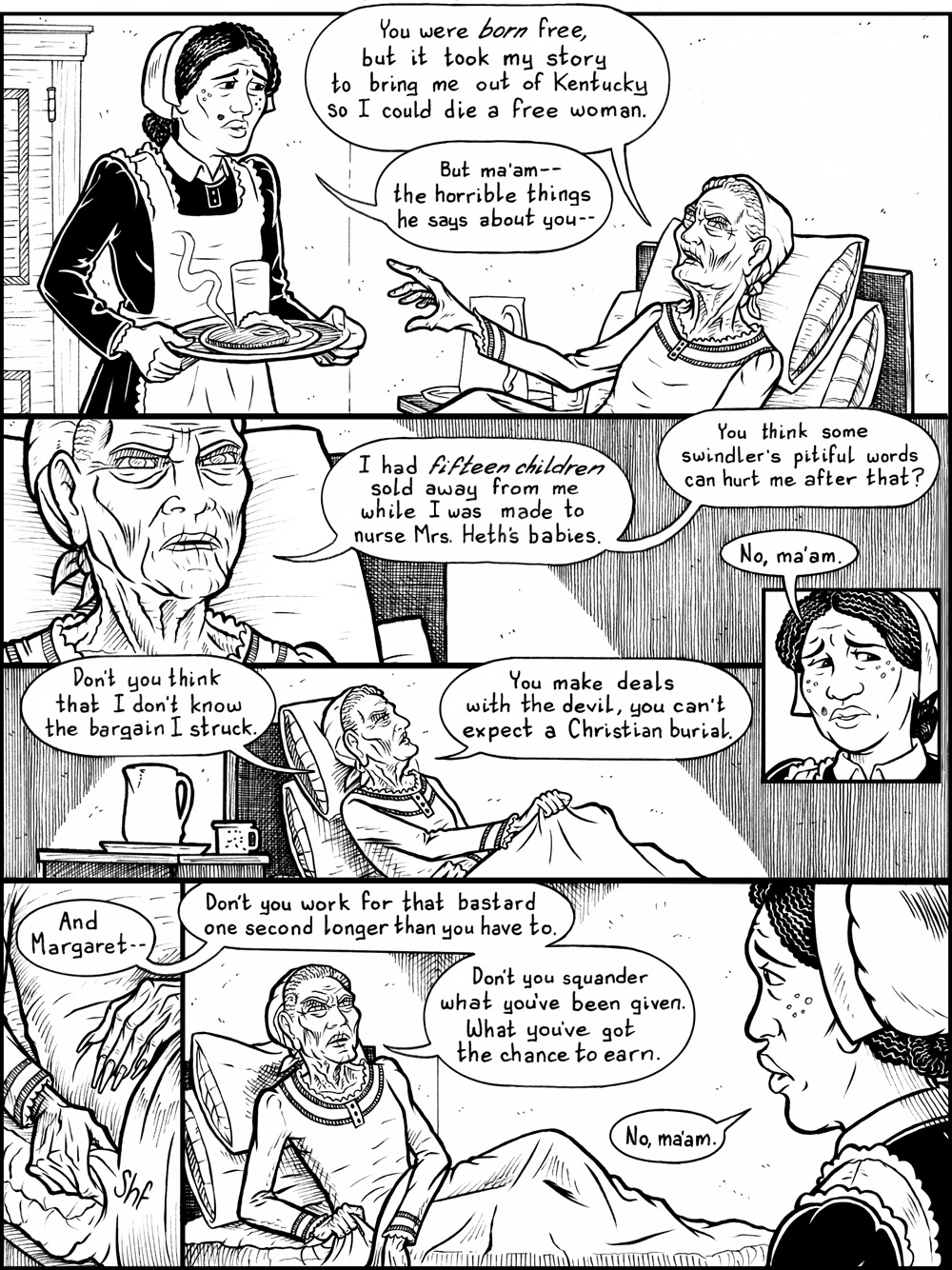True to her word, Joice Heth did not receive a Christian burial. From Barnum’s biography:
When the audiences began to decrease in numbers, a short communication appeared in one of the newspapers, signed ” A Visitor,” m which the writer claimed to have made an important discovery. Be stated that Joice Heth, as at present exhibited, was a humbug, Trhereas, if the simple truth was told in regard to the exhibition, it Ws really vastly curious and interesting. “The fact is,” said the communication, “Joice Heth is not a human being. What purports to be a remarkably old woman is simply a curiously constructed automaton, made up of whalebone, india-rubber, and numberless springs ingeniously put together, and made to move at the slightest touch, according to the will of the operator. The exhibitor is a ventriloquist, and all the conversations apparently held with the ancient lady are purely imaginary, so far as she is concerned, for the answers and incidents purporting to be given and related by her, are merely the ventriloquial voice of the exhibitor.”
Maelzel’s ingenious mechanism somewhat prepared the way for this announcement, and hundreds who had not visited Joice Heth were now anxious to see the curious automaton; while many “who had seen her were equally desirous of a second look, in order to determine whether or not they had been deceived. The consequence was, our audiences again largely increased.
Either Barnum, or his business associate Levi Lyman, was almost certainly the author of this letter.
Barnum would return to this ‘automaton’ ploy after Heth died a few months later. Heth was publicly autopsied at a New York saloon, and Barnum charged his audience fifty cents’ admission to watch.
Still not content to let the story die, Barnum went on to claim that Heth was alive and well, living in Connecticut.
Despite having owned other slaves besides Heth, Barnum had a change of heart later in life, and after his election to the Connecticut General Assembly, he gave a speech before the legislature in favor of male African-American suffrage. He also hosted a stage production of Uncle Tom’s Cabin at his Museum, albeit with a happy ending.
Note for sensitive readers: The next page continues to bear trigger warnings for racism and slavery.
